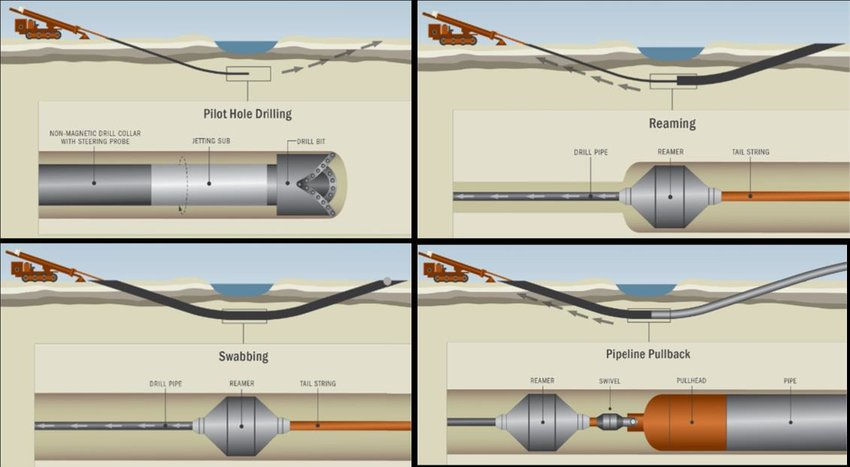Unlocking the Potential of Underground Boring Services in Smart Cities
- Grid Tech
- May 18, 2023
- 3 min read
As we know that the world population is rapidly continues to urbanize. Even the concept of smart cities has gained significant importance. Smart cities are the future of urban development. It leveraging advanced technologies and innovation to enhance the quality of our lives.
In the process of urban development, innovation and efficiency always go hand in hand. If you want to tackle the challenges associated with expanding cities, there is a ground-breaking solution is available: underground boring service. There is a hidden world of potential, waiting to be revealed, beneath the bustling streets and towering skyscrapers. So, by using remarkable underground boring techniques, we are able to pave the way for development of smart cities.

What is Underground Boring Service?
Underground boring services, also known as Horizontal Directional Drilling (HDD). It is the process of creating tunnels, conduits and underground pathways for various purposes, such as utility installation, transportation network and waste management systems. This directional drilling procedure involves drilling a small pilot hole horizontally underground and then using specialized drilling equipment to enlarge the hole to the desired diameter. The process becomes popular as it installs underground utilities without the need for traditional trenching or excavation.
By utilizing this underground space effectively, smart cities can overcome many challenges they face and unlock a host of benefits. Let’s explore how underground boring services can revolutionize the smart city development.
Efficient Utility Infrastructure:
One of the key aspects of a smart city is a reliable and efficient utility infrastructure. Underground boring services can play a crucial role in the installation and maintenance of utility networks. By placing power lines, water pipes and fiver optic cables underground, smart cities can minimize disruptions caused by natural disasters, reduce energy losses, and improve the aesthetics of urban landscapes. Most importantly, advanced technologies such as remote sensing and real-time monitoring can be integrated into these underground systems, allowing for proactive maintenance and rapid response to any issues that may arise.
Enhanced Transportation Systems:
Efficient transportation is a prime factor of smart cities. Underground boring services can revolutionize transportation by creating underground tunnels for high-speed trains, automated vehicle networks, and pedestrian walkways. These underground transportation systems offer numerous benefits, including reduced congestion, enhanced safety, and improved connectivity between different parts of the city. Moreover, underground tunnels can be designed to withstand extreme weather conditions and natural disasters, ensuring uninterrupted transportation services even in adverse circumstances.
Environmental Sustainability:
Sustainability is a crucial aspect of smart city development. Underground boring services can contribute significantly to environmental sustainability by facilitating waste management systems and reducing pollution. Underground tunnels can be utilized for waste disposal, recycling facilities, and even underground farming.
By moving waste management operations underground, smart cities can free up valuable land space for other purposes, reduce the carbon footprint associated with waste transportation, and minimize the environmental impact of waste disposal.
Improved Urban Planning:
Underground spaces offer immense potential for smart city planners to optimize land use and urban design. By utilizing underground boring services, cities can free up surface land for parks, green spaces, and recreational areas. This not only enhances the liability of the city but also promotes environmental sustainability. Furthermore, underground spaces can be repurposed for various community amenities, such as underground shopping malls, cultural centers, and sports facilities, adding to the vibrancy and attractiveness of the urban landscape.

Resilience and Disaster Management:
Smart cities need to be resilient in the face of natural disasters and emergencies. Underground boring services can contribute to the resilience of smart cities by creating underground shelters, emergency evacuation routes, and disaster response centers. These underground spaces can provide protection against earthquakes, hurricanes, and other catastrophic events, ensuring the safety and well-being of citizens. Additionally, underground communication and data infrastructure can facilitate real-time monitoring and coordination during emergencies, enabling swift and effective response measures.
Integration of Emerging Technologies:
Underground spaces offer a blank canvas for the integration of emerging technologies that are shaping the future of smart cities. For example, the deployment of 5G networks, Internet of Things (IoT) sensors, and autonomous systems can be seamlessly integrated into underground infrastructure, providing enhanced connectivity, efficient data transfer, and advanced automation. This integration enables a wide range of applications, including smart lighting, traffic management, environmental monitoring, and smart parking, fostering a truly connected and intelligent urban environment.

Final Thoughts
Underground boring services have tremendous potential in transforming smart cities into efficient and sustainable hubs. By utilizing underground spaces for utilities, transportation, waste management, and urban planning, cities can address key challenges and unlock numerous benefits.
By tapping into the hidden potential beneath our feet, smart cities can create a future where technology seamlessly integrates with urban life, making our cities more liveable and enjoyable for everyone.


Comments